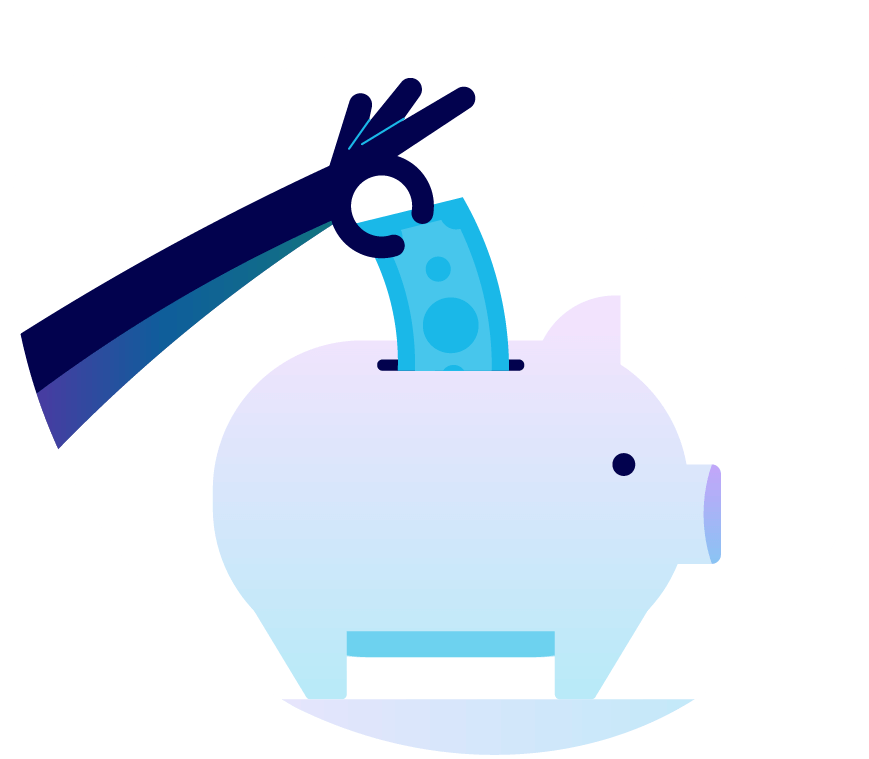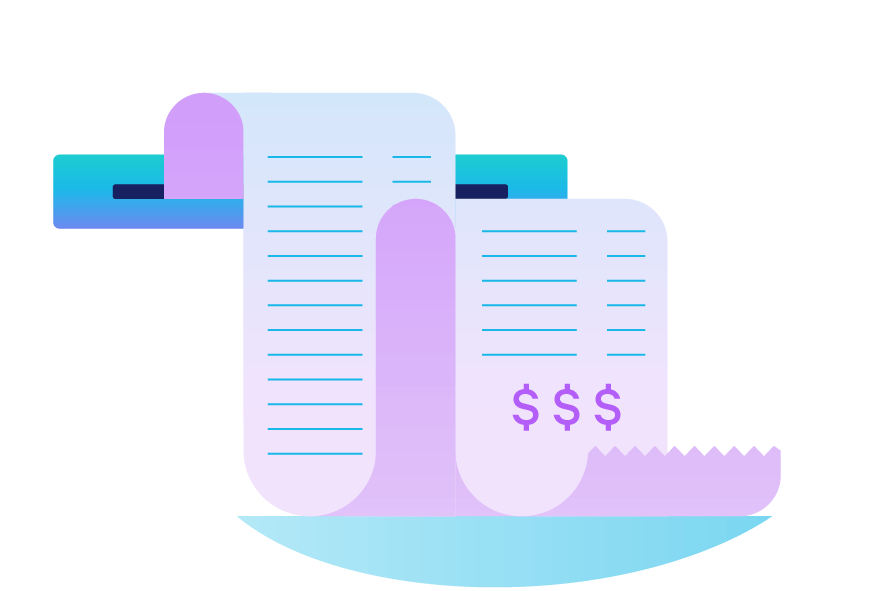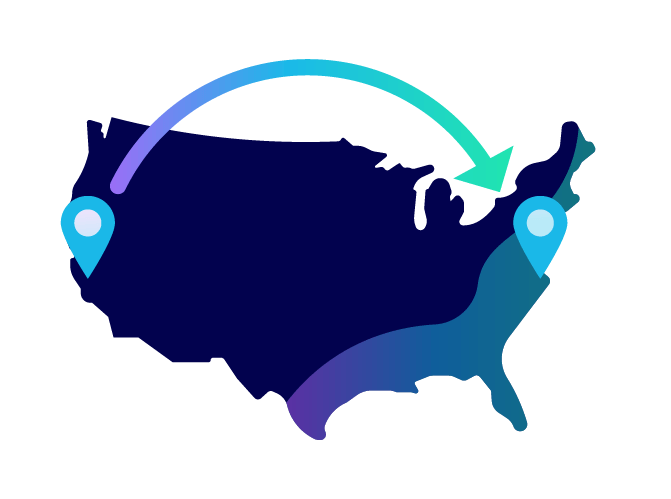106 Must-Know Startup Statistics for 2024
We've put together a list of 100+ startup statistics that anyone interested in learning more about startup culture and current trends should read.

What comes to mind when you hear the word startup?
If it’s a grungy basement in the heart of Silicon Valley, you’re not alone. A large portion of people think of startups as a team of only five people with one common thread—a high threshold for chaos, but even a five-year-old company can still be considered a startup.
A startup can graduate to a larger company by being acquired, opening more than one office, generating revenues greater than $20 million, or having more than 80 employees, Forbes explains.
These employees work for entrepreneurs who believe their ideas could skyrocket by creating a startup. Well that’s the dream, right? The risky reality when it comes to startups is that they’re vulnerable to risk and likely more than we would imagine. On the bright side, 10% of startups are successful each year and know what it takes to survive the odds of failing.
During the beginning stages of a startup, finding your seed funding is more than half the work. Your initial funding will most likely come from your own pockets and then the goal is to raise outside capital.
To track the latest trends, we’ve compiled small business and startup statistics to better understand what makes a startup tick. If you’re looking to build a startup or just interested in diving into the numbers, check out these informative statistics on success, failure, funding and more before getting started.

Check your startup’s risks
Learn what could slow your growth and how to protect against it.
Startup Statistics and Trends
02Startup Success Rates
03Startup Failure Rates
04Startup Funding + Investor Facts
05Startup Costs Statistics
06A Look at Startup Teams
07Statistics for FinTech Startups
08Statistics for Construction Startups
09Statistics for Technology Startups
10Statistics for Real Estate Startups
11Future of Startups
12The Experts’ Opinions
Startup Statistics and Trends

The average time between funding rounds from Seed to Series A is 18 months, Series A to B is 10-18 months, and Series B to Series C is 27 months.
Carta47% of Series A startups spend $400k or more per month.
FundzThe average funding amount for a Series C round is $68 million.
FundzOnce you get to a Series B or C round, you’ll probably work for 15 to 20 months before bringing in new capital.
Forbes
There were5 million new businessses created in 2022.
GustoIn 2022, there were 30.2 million small businesses operating in the U.S.
SBA
Companies raise nearly three rounds before they get to Series A funding.
TechCrunch51.4% of entrepreneurs have at least a bachelor’s degree.
Ewing Marion Kauffman FoundationOnly 2 in 5 startups are profitable, and other startups will either break even (1 in 3) or continue to lose money (1 in 3).
Small Business TrendsIn 2022, AngelList saw 21% YoY growth despite an industry-wide 1.4% decrease in pre-Series C VC deals.
AngelListThe average Series A in 2017 was $12.1 million. By 2022, it reached $15 million.
FundzA study shows that a 60 year old is 3x as likely to build a successful startup than a 30 year old in 2023.
EntrepreneurIn 2022, there were 1,000 “active unicorns” in the U.S. collectively worth $1.1 trillion.
BloombergStartups can expect to pay, on average, $300,500 for five employees across the U.S. in the first year.
HubSpot41.5% of all entrepreneurs are women, while 58.5% are men.
ZippiaThe time of year you pitch, the detailedness of your data, and the value of your pitch deck are a few of the strongest factors affecting the amount of funding a business receives.
ForbesIt only takes six days to start a business in the United States.
Dynado66% of small businesses will outsource services to other small businesses.
FreshBooksStartup Success Rates

Founders of a previously successful business have a 30% chance of success with their next venture.
Skill vs. Luck in Entrepreneurship and VC82% of successful business owners admit they have the right qualifications and backed up experience to run a company, even with limited cash flow.
Small Business TrendsPaying attention to your customers is important since 14% of startups fail due to not regarding customers’ needs.
FunderaThe main challenge to the success of a startup is generating new business.
StatistaFounders who have failed previously have a 20% chance of success while first time first time founders have an 18% chance of success.
Skill vs. Luck in Entrepreneurship and VCIn 2022, U.S. healthcare startups were the strongest industry, bringing in $12.6 billion in revenue.
Fierce Healthcare
Startup Failure Rates

About 90% of startups fail.
Failory10% of startups fail within the first year.
FailoryAcross all industries, startup failure rates seem to be close to the same.
SBA
Failure is most common for startups during years two through five, with 70% falling into this category.
FailoryThe number one reason why startups fail is due to misreading market demand — this is found in 42% of cases.
CBInsights
The second largest reason why startups fail (29% of cases) is due to running out of funding and personal money.
CBInsights
Other notable cases of failure are a weak founding team (23%) and being beat by competition (19%).
CBInsightsFailure because of competition most likely happens when a startup has been active for three to five years.
FailoryOther major reasons for startup failures (at least 10% or above) are from pricing/cost issues, user-unfriendly products, poor marketing, and product mistiming.
CBInsightsIn 2023, 82% of businesses that went under did so because of cash flow problems.
FunderaStartup Funding + Investor Facts

Individual venture capital firms receive more than 1,000 proposals a year and are mostly interested in businesses that require an investment of at least $250,000.
Money Crashers
31% of startup capital for employer firms is less than $10,000.
Federal Reserve18% of startup capital for employer firms is $250,000 or more.
Federal ReserveVenture capital funding reached a decade-high of $200 billion in 2022.
KPMGAbout 1% of startups evolve into a unicorn startup, like Uber, Airbnb, Slack, Stripe, and Docker.
CBInsightsIn 2022, male founders brought in $156.2 billion in VC, while female founders only brought in $28.1 billion in VC.
PitchBookValued at $75 billion, Bytedance, a Beijing-based news and information content platform, was the top valued startup by venture capital firms worldwide in March 2019.
StatistaOne in four businesses, surveyed by the NSBA, were not able to receive the funding they required, which led to limiting the growth of their business.
Fundera1 in 3 begin their small business with less than $5,000.
Small Business TrendsBusiness loans, credit cards, and lines of credit account for about ¾ of financing for new firms.
SBA

Startup Costs Statistics

One of the most expensive startup costs is payroll, averaging around $300,500 for five employees across the U.S. according to data from
Smart AssetThe most popular financing method for startups costs in 2023 was "love money" aka friends and family.
Chamber of Commerce
Large unicorn startups, such as Airbnb and Uber, have taken a billion dollars or more in debt in order to become more successful.
PitchBookWith costs being so large and detrimental to a startup’s survival, the median salary for self-employed individuals was $84,305 in 2022.
ZippiaRecent research has shown the most expensive small businesses and startups to launch are restaurants, medical offices, and manufacturing companies, needing more than $100,000 to get started.
Small Business TrendsStartups in accounting, online retail, construction, and landscaping were most likely to get started with under $5,000 in startup costs, shown in recent research.
Small Business TrendsOne of the biggest challenges to the survival of small businesses and startups is the cost of health insurance.
NSBAA Look at Startup Teams

Over 99% of U.S. businesses are considered small (less than 500 employees).
SBAOn average, it takes six months to hire someone for a startup.
ForbesStartup teams that reported high levels of previous experience but average to low levels of passion and collective vision were overall weaker.
Harvard Business ReviewStartup owners can spend around 40% of their working hours on tasks that do not generate income such as hiring, HR tasks, and payroll.
Entrepreneur
Startup failure is most common when the company has 11–50 employees.
FailoryTwo founders increase the odds of a startup’s success with 30% more investment, three times the customer growth rate, and a higher likelihood the startup will not scale too fast.
Small Business Trends23% of startups mentioned team issues leading to failure.
EntrepreneurExperience alone does not make a team successful — soft skills such as “entrepreneurial passion” and “shared strategic vision” are required as well.
Harvard Business ReviewOver 18% of small businesses have a Chief Financial Officer.
ForbesStatistics for FinTech Startups

Decentralized finance startups raised $2.1 billion in the first quarter, and NFT-focused startups $2.4 billion, both all-time highs.
TechCrunch
Research has shown that successful fintech startups will focus on data-driven iteration and continuous user testing, rather than using new technology.
McKinsey Panorama ReportVenture investment into fintech companies in 2022 reached $81 billion as of Dec. 14.
CB InsightsAbout 80% of financial institutions implemented a fintech partnership.
McKinsey Panorama ReportAbout 21% of American adults have owned cryptocurrency as of 2022.
BankrateWorldwide, there are more than 12,000 fintech startups and 5,779 in the U.S. This makes the U.S. the most popular place for fintech startups as of August 2018.
Statista
The fintech market includes 39 venture capital backed unicorns worth a combined $147.37 billion.
CB InsightsCrypto startups mostly shrugged that off, raising a huge number of rounds worth $100 million in the three-month period and minting a record number of unicorns.
TechCrunchIn October 2022, the US has held its leading unicorn share, accounting for slightly more than half of all unicorns (53.9%).
CB InsightsAccording to a recent dataset from CB Insights, crypto startups raised more capital than ever before in Q1 2022 and set records across a host of other metrics.
TechCrunchThe largest challenge that fintech startups face is the cost of customer acquisition.
McKinsey Panorama ReportStatistics for Construction Startups

In North America, construction tech startups alone reportedly hit $1.3 billion in the first half of 2022, representing a 44% increase on the previous six months.
TechCrunchInvestors contributed to 87 construction startup deals last year.
CrunchbaseOne of the now monster startups, Katerra, brought in $865 million in a Series D round.
CrunchbaseThe construction industry is among the least digitized.
McKinsey & Co. 2016 studyThe likelihood that a new construction company will last more than five years is 36.4%.
Small Business TrendsGood news for construction startups, AI technology is estimated to boost profits by 71% for this industry.
AccentureResidential housing construction is growing faster than any construction segment, as new business is seen entering this sector.
Tradesmen InternationalElectric utilities construction is approximated to slide by 9%.
Tradesmen InternationalStatistics for Technology Startups

The average age of tech startup founders is 45.
EntrepreneurThe U.S. is the largest tech market in the world, coming in at $1.8 trillion in 2022.
ZippiaThe United States averages 20 technology companies founded per year that reach $100 million in revenues.
Ewing Marion Kauffman FoundationAs of 2018, the tech startup industry has the highest startup business failure rate, at 63%.
FailoryTech-based wage growth was higher than over the U.S. wage growth with a 60.9%.
Adecco GroupThere are ten technology-based industries that define a tech-drive startup including: pharmaceutical manufacturers, medical device manufacturers, computer and electronic manufacturers, and semiconductor machinery manufacturers.
ITIFTech-driven ventures offer better pay opportunities, as they pay an average of $102,000 more than double the current U.S. average of $48,000.
ForbesStatistics for Real Estate Startups

Venture-backed U.S. real estate companies are down an average of 85% from their offering price.
CrunchbaseProptech startups raised 19.8 billion globally from venture capital firms in 2022.
ConnectedRemagResidential real estate startups using artificial intelligence tools are bringing in the most investments, such as REX ($45 million), Knock ($400 million), and ZIllow ($565 million).
HousingwireIndustrious has raised over $1 billion in funding as of March 2023. This includes a $200 million Series E funding round in February 2021, which was led by Brookfield Asset Management and included participation from several other venture capital firms.
CrunchbaseThe top type of real estate asset that proptech startup CEOs have chosen to pay attention to is commercial property.
Statista
A large number of small businesses and startups are beginning to support real estate agents and other professionals within the industry.
inman
Startups worldwide raised a total of $415.1 billion from investors in 2022, down 35% from 2021's all-time high.
HubspotThe global quantum computing market size is forecast to expand from $470 million in 2021 to $1,765 million in 2026.
StatistaAbout 31% of commercial real estate investors plan on investing in proptech companies and 26% plan on partnering with protech companies.
StatistaFuture of Startups

Startup founders are leaving the Silicon Valley “bubble” and heading to the East coast.
The Wall Street Journal
Unicorns are much more common and trending to be even more common. The rate has increased by 1.2% in October 2022.
CB InsightsTo solve problems across various startup industries, new technology will be implemented.
EntrepreneurRecognize that personalized marketing will become important to the success of your startup.
Startupbasics2022 is the year where startups will turn heavily towards technology to assist with keeping up with their books and avoiding financial distresses.
SmallBizTrendsStartup subscription boxes that are related to food, beauty products, apparel, and lifestyle will continue to be popular.
Startupbasics
More and more startups will begin to collaborate and become open to partnerships.
StartupbasicsWithin the next few years, we will see more entrepreneurs that have recently graduated from college.
EntrepreneurThe new customer success role will become a data engineering role.
LinkedInThe Expert’s Opinions

According Forbes, the best way to learn more about entrepreneurship is to start a company.
ForbesAsses all potential bottlenecks apart from the competition. Make sure your team is experienced enough and that you are aware of all small threats, which could lead to a larger threat.
FailoryResearch businesses similar to you that have been active for longer than five years.
FailoryWhen building your team, look for your business’s weak spots to identify the skill sets required to satisfy your company’s needs.
Founder Institute
“The secret to successful hiring is this: look for the people who want to change the world.”
Marc Benioff, CEO of Salesforce92% of business owners believe that having a website is the most effective digital marketing strategy.
Iron Paper
"Chase the vision, not the money; the money will end up following you."
Tony Hsieh, CEO of ZapposForbes mentions the criteria for a successful startup, “They have a product that meets a need, they don’t ignore anything, they grow fast, and they recover from the hard-knock startup life”.
ForbesThe most valuable thing you can do as a founder is recognizing your downfalls beforehand and learning from other businesses’ failures. Apply this knowledge to starting your own startup.
Failory
How risk-ready is your startup?
Check if your startup is ready to handle industry-specific risks. Use our free Risk Profile tool to spot weaknesses and get tailored strategies in minutes.

Despite the startup failure rate, learning from your mistakes in business and the mistakes of others is the key to startup success and survival. Appreciate the competition, know where you stand, and take note of all startup trends in order to be at the top of your startup’s industry.
Want to learn more about our coverages?
Related articles and resources
-
November 8, 2024
-
-
-








